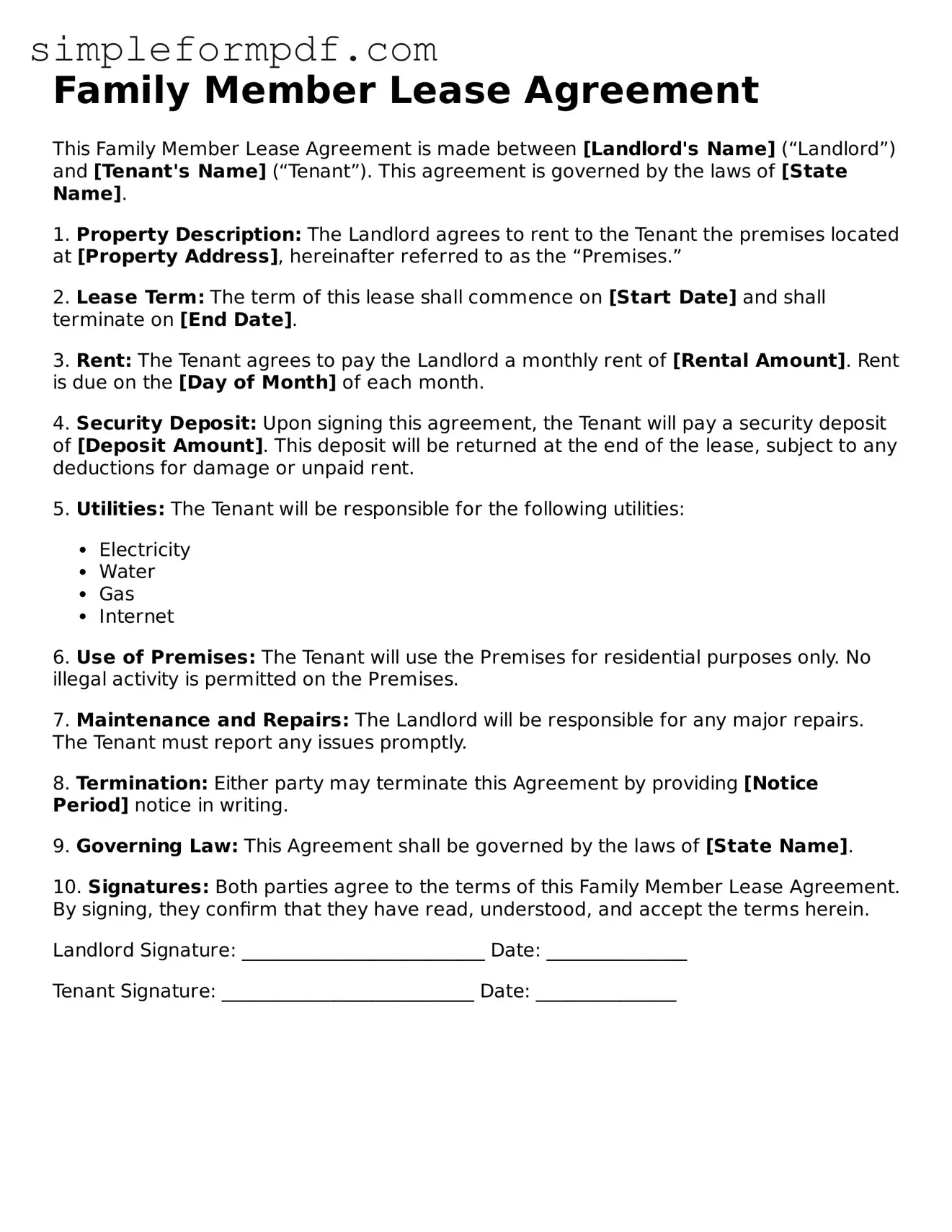Family Member Lease Agreement
This Family Member Lease Agreement is made between [Landlord's Name] (“Landlord”) and [Tenant's Name] (“Tenant”). This agreement is governed by the laws of [State Name].
1. Property Description: The Landlord agrees to rent to the Tenant the premises located at [Property Address], hereinafter referred to as the “Premises.”
2. Lease Term: The term of this lease shall commence on [Start Date] and shall terminate on [End Date].
3. Rent: The Tenant agrees to pay the Landlord a monthly rent of [Rental Amount]. Rent is due on the [Day of Month] of each month.
4. Security Deposit: Upon signing this agreement, the Tenant will pay a security deposit of [Deposit Amount]. This deposit will be returned at the end of the lease, subject to any deductions for damage or unpaid rent.
5. Utilities: The Tenant will be responsible for the following utilities:
- Electricity
- Water
- Gas
- Internet
6. Use of Premises: The Tenant will use the Premises for residential purposes only. No illegal activity is permitted on the Premises.
7. Maintenance and Repairs: The Landlord will be responsible for any major repairs. The Tenant must report any issues promptly.
8. Termination: Either party may terminate this Agreement by providing [Notice Period] notice in writing.
9. Governing Law: This Agreement shall be governed by the laws of [State Name].
10. Signatures: Both parties agree to the terms of this Family Member Lease Agreement. By signing, they confirm that they have read, understood, and accept the terms herein.
Landlord Signature: __________________________ Date: _______________
Tenant Signature: ___________________________ Date: _______________
